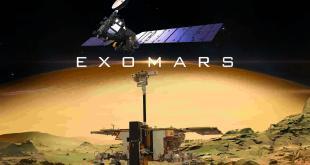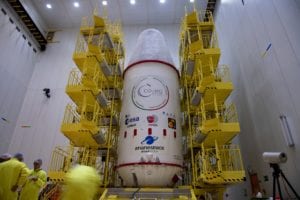
Cheops, the CHaracterising ExOPlanet Satellite, is scheduled to launch on a Soyuz-Fregat rocket from Europe’s Spaceport in Kourou, French Guiana at 09:54 CET on 17 December 2019. Cheops is ESA’s first mission dedicated to the study of extrasolar planets, or exoplanets. It will observe bright stars that are already known to host planets, measuring minuscule brightness changes due to the planet’s transit across the star’s disc.
Cheops will lift off as a secondary passenger, hitching a ride on the Soyuz-Fregat that will deliver the first satellite of the Italian Space Agency’s Cosmo-SkyMed Second Generation constellation into space. The launcher will also carry three ‘CubeSats’, small satellites based on standardised 10 cm cubic units, including ESA’s OPS-SAT, the world’s first free-for-use, in-orbit testbed for new software, applications and techniques in satellite control.
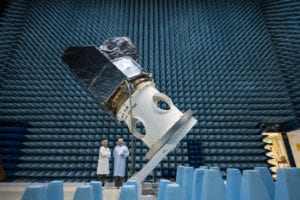
The three ‘CubeSats’ are:
ANYWAVES, a start-up company for the NewSpace sector. The 17 December launch will enable ANYWAVES to secure the first flight heritage of its miniature and revolutionary antennas. Five ANYWAVES antennas will be on board the launcher, two antennas on the Angels (25kg – 12U) and three antennas on EyeSat (10kg – 3U) nanosatellites. Once this step is successfully completed, ANYWAVES will become the first European equipment supplier on the growing market for SmallSat antennas.
Created in April 2017 in Toulouse by its founder Nicolas Capet (former antenna Expert at CNES), ANYWAVES offers two antenna products for SmallSats: the S-band antenna for TTC links and the X-band antenna for payloads TM.
“We are the only pure player on the market for nanosatellite antennas in Europe” said Capet.
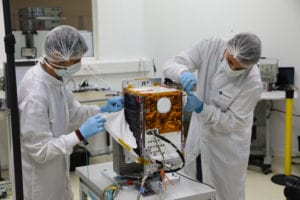
ANYWAVES’ miniature and revolutionary antennas have a diameter less than 10cms and a thickness of around 1cm thanks to properties derived from metamaterials. They are designed to transmit information on the operational state of the satellite. The materials and processes used for assembly have proven space heritage based on CNES expertise (CNESADVANCE label).
The space segment market has long been structured by a HIGH TECH – LOW VOLUME dynamic serving ever more demanding missions. With the arrival of NewSpace, the new challenge for the space industry is to move towards a dynamic of NEW TECH – HIGH VOLUME. ANYWAVES has addressed this challenge by developing a new generation of antennas especially designed for NewSpace, with a standard delivery time of 3 – 5 months that can be converted into a 1-month delivery.
ANGELS space program
ANGELS (ARGOS Neo on a Generic Economical and Light Satellite) is a nanosatellite jointly developed by CNES and the electronic equipment manufacturer Hemeria, which will carry a payload for localisation and collection of geo-satellite data. The ANGELS project gathers many of the Newspace Factory’s industrial partners such as ANYWAVES, Hemeria, CS Group, Erems, Mecano ID as well as other partners: SAFT, Spacebell and Steel.
For the ANGELS mission, start-up company ANYWAVES provided two units of its SmallSat S-band antennas, which operate simultaneously in transmission and reception. ANYWAVES antennas offer the best Half Power Beam Width (> 90°) on the market, which significantly improves the average throughput and budget link margins in satellite orbits.
JANUS space program (EyeSat)
The JANUS space program is an astronomy mission which will enable studies of the zodiacal light and the milky way. On board, there will be new technologies to be tested in orbit and to be analysed jointly by CNES, members of Newspace Factory (ANYWAVES, Erems) and the JANUS research field team (Jeunes en Apprentissage pour la réalisation de Nanosatellites au sein des Universités et des écoles de l’enseignement Supérieur).
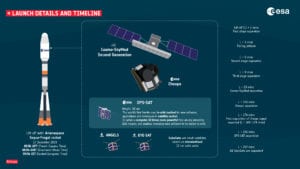 Tune in to ESA Web TV from 08:30 GMT (09:30 CET) Tuesday 17 December to watch ESA’s exoplanet mission soar into space on a Soyuz-Fregat rocket from Europe’s Spaceport in Kourou, French Guiana.
Tune in to ESA Web TV from 08:30 GMT (09:30 CET) Tuesday 17 December to watch ESA’s exoplanet mission soar into space on a Soyuz-Fregat rocket from Europe’s Spaceport in Kourou, French Guiana.




